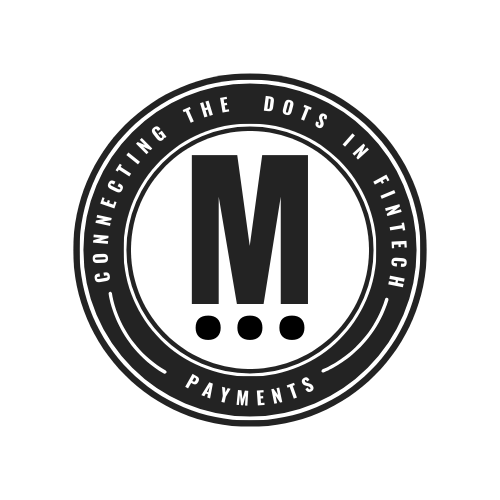Google Shuts Down GPay and P2P Payments in the US

Hey Payments Fanatic!
As of June 4, 2024, Google has officially discontinued its GPay app and peer-to-peer payment services in the United States. This change follows an announcement made in February. The redesigned Google Pay, introduced in 2020 with the goal of simplifying money management and offering a mobile-first bank account, never fully materialized.
On June 4, GPay users in the US were automatically signed out of the app. Attempts to log back in now prompt a message stating, “The Google Pay US app is no longer available. You can still tap to pay using the Google Wallet app.”
Furthermore, Google has ceased peer-to-peer payments within the US. Users can still manage their balances and transfer money or rewards to a bank account through the Google Pay website, but the primary focus has shifted to Google Wallet. This app aims to digitize all items traditionally kept in a physical wallet, though it lacks financial tracking features. Despite these changes, “Google Pay” remains the term used for physical or online purchases made via phone.
The Transition to Google Wallet
The 2020 redesign of Google Pay was intended to create an app focused on user relationships with people and businesses, utilizing message-like conversations to log purchase history. The app also offered bank account and credit card tracking through the “Insights” tab, powered by Plaid, and featured numerous deals and cashback offers.
In November 2022, Google announced co-branded checking and savings “Plex Accounts,” in partnership with banks and credit unions, including Citi. These accounts promised physical cards and customizable savings goals, such as “round-up transfers” to meet specific milestones.
However, the Plex project was canceled in October 2021 despite having a waitlist of 400,000 users. Google explained that it was shifting its focus to “delivering digital enablement for banks and other financial services providers” rather than directly offering these services itself.
In conclusion, Google’s strategic pivot emphasizes the use of Google Wallet for digital transactions while stepping back from direct financial service offerings.
What do you think about this move by Google?
Cheers,
INSIGHTS
Apple is moving from a solo Apple Pay Later to a collaborative BNPL ecosystem.
Here's a high-level overview of what is changing:

Source: Sanjeev Kumar from WhiteSight
PAYMENTS NEWS
🇺🇸 PayPal Names Srini Venkatesan as Chief Technology Officer. In this role, Venkatesan will lead the development and implementation of technology across the entire PayPal ecosystem, including analytics and data science, AI and machine learning, information security, infrastructure operations, and product engineering.
🇧🇷 Alternative Payments launches DPMaxBrazil. US-based global payment infrastructure provider Alternative Payments has announced the launch of DPMaxBrazil, allowing US merchants to have access to PIX in Brazil, and supporting the expansion of the company’s reach in Latin America.
🇨🇭 AMINA Bank, a licensed and FINMA-regulated digital assets bank, has announced the launch of the AMINA Payment Network (APN). Designed to address the needs of the crypto banking world, APN helps to facilitate real-time payments to other APN members.
🇧🇷 Unlimit and Convera partner to simplify tuition payments for students in developing countries. The partnership will kick off in Brazil, with Convera leveraging Unlimit’s comprehensive alternative payment method (APM) portfolio to enable the seamless payment of cross-border tuition fees via the GlobalPay for Students platform using PIX without any additional charges.
🇬🇧 In line with its mission to achieve ultimate financial inclusivity for all, Payments Solutions Provider, Ecommpay, is pleased to be supporting Project Nemo for the duration of its 12-month campaign to connect disability inclusion experts with FinTech decision makers who want to accelerate their disability inclusion journey.
🇺🇸 ConnexPay, an all-in-one payments platform, announced the addition of Kurt Adams to the company’s board of directors. Adams has 25 years of experience in senior leadership roles within the financial services and payments industries, including the role of former CEO at Optum Financial.
🇫🇷 Stripe becomes Accor’s primary global payments partner. Accor has a strong ambition to establish a comprehensive ecommerce platform offering a variety of services beyond rooms including spa services, restaurants, and even unique experiences.
🇬🇧 SumUp and Adyen partner to bring faster payouts to millions of SMEs globally. The strategic partnership is established to provide a best-in-class payments experience for SMEs across the globe, bringing together two global FinTechs with decades of payments experience.
🇺🇸 Global payment company Corpay is set to acquire GPS Capital Markets, a cross-border and treasury management solutions provider primarily focused in the US. The company expects to close the deal in early 2025, subject to regulatory approval.
🇬🇧 AccessPay secures £350k in first Praetura VCT investment. This funding will enable the company to expand its international presence and further develop its product offerings to meet the needs of its clients worldwide, according to CEO Anish Kapoor.
🇳🇴 Vipps MobilePay launches P2P payments between Denmark, Norway and Finland. The new service means that Vipps users in Norway and MobilePay customers in Denmark and Finland can ditch Iban numbers for money transfers between the countries.
GOLDEN NUGGET
What is the difference between “pull” and “push” Payments?
The diagram below shows you how it works: Pull 🆚 Push 👇

► When we swipe a credit/debit card at a merchant, it is a pull payment, where the money is sent from the cardholder to the merchant. The merchant pulls money from the cardholder’s account, and the cardholder approves the transaction.
► With Visa Direct or Mastercard Send, the push payments enable merchant, corporate, and government disbursements.
Step 1️⃣ The merchant initiates the push payment through a digital channel. It can be a mobile phone or a bank branch etc.
Step 2️⃣ The acquiring bank creates and submits an OCT (Original Credit Transaction) to the card scheme.
Step 3️⃣ The transaction is routed to the receiving institution.
Step 4️⃣ The issuing bank credits the cardholder’s account and notifies the cardholder. The money is deposited into a Visa account that can be accessed at an ATM or PoS terminal or a digital wallet.
Note that the push payments work for cross-border transactions.
Push payments are indeed an interesting innovation, which complements the digital wallet strategy in Visa and Mastercard. The abstraction of “account” masks the complication of different funding or consuming channels.
Source: Hua Li from ByteByteGo (👈 follow these accounts for more insightful payments updates like this one)
Want your message in front of 100.000+ FinTech fanatics, founders, investors, and operators?
Shoot me a message on LinkedIn.



Comments ()